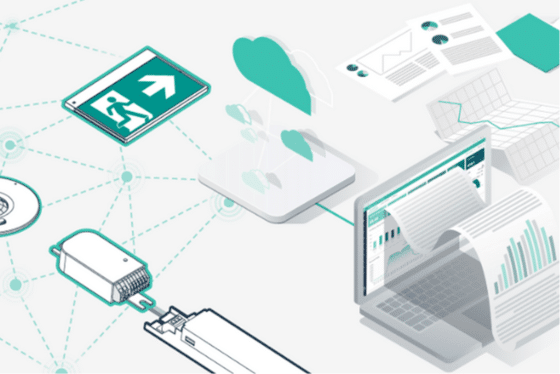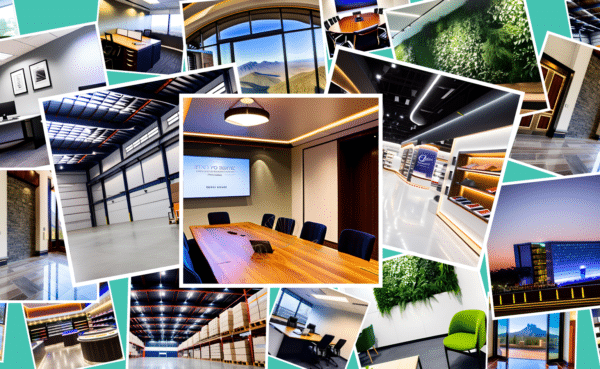“Sustainable Emergency Lighting” – A great title, but is there such a thing?
Can emergency lighting really be sustainable?
In this blog we argue that although emergency lighting is typically considered a “Life Safety System” and therefore excluded from green legislation, it can still be sustainable with the appropriate strategy.
We explain how a well-planned and managed system can be both energy efficient and environmentally conscious, and even save you money!

Can emergency lighting be sustainable?
Despite being classified as a “Life Safety System” and often exempt from green legislation, emergency lighting can indeed be sustainable with the right approach. A well-designed and managed system can be both efficient and environmentally friendly.
For truly sustainable emergency lighting, the design of the system must incorporate the control system, the operating methodology, and the service life of the system. The choice of platform and security of supply is very important as the world attempts to move towards a more circular economy.
Open Protocol
In choosing an open protocol solution such as DALI-2 (wired) and DALI+ (wireless) you can be assured of an on-going choice of suitable equipment regardless of the ups and downs of individual manufacturers or integration companies.
Design
A well-designed system should prioritise performance and optimisation, taking into account expenditure on future maintenance and the cost of compliance.
Standalone
Where a standalone emergency system is installed, the lighting control system can be connected to allow for pre-set timers for manual testing.
Integrating Emergency and General Lighting Control
If a DALI-2 or DALI+ system is chosen for both the emergency and general lighting control, a reduction in the associated hardware and installation time can be achieved, which from a sustainability viewpoint, would be seen as a net gain. Further with the zencontrol system that Intelligent Environments utilise, emergency testing, monitoring and reporting can be run seamlessly, along with the general lighting. This not only makes maintenance and compliance less costly in terms of labour time, but adds to the argument that a sustainable emergency lighting system is perfectly achievable.
Scale
The scale of the project will likely determine whether a standalone system with manual testing is installed, or whether the more sustainable emergency lighting option is chosen, with integration to the zencontrol lighting management platform allowing for full automated monitoring, testing and reporting on all DALI lights and devices, including emergencies.
Intelligent Environments + zencontrol + Ektor
One of the advantages of our partnership with zencontrol, is our relationship with Evolt, the company within the zencontrol group that manufactures the range of Ektor luminaires, signs and conversion modules.
These products are available via electrical wholesalers, not via our company. The advantage to us in promoting the Ektor range of emergencies, is knowing that these products being based on DALI-2 and DALI wireless, allows us to seamlessly merge the zencontrol system and emergency monitoring and testing. This converged approach reduces hardware and associated cabling, hence reducing costs and resulting in a more sustainable approach.
zencontrol Software
Finally, software is key in it’s ability to receive and analyse the appropriate data and present it in a way that can assist the user with managing maintenance and compliance obligations
What we love about the zencontrol software platform, is the ability to provide a full audit trail for DALI-2 (wired) and DALI+ (wireless) devices that takes gives visibility of when each device was tested and maintained, and who carried out that maintenance. Opting for additional power analytics features, means this information can be integrated with the wider building systems to provide whole life carbon data for all lighting services.
Conclusion
Ultimately less is more and if we can reduce hardware in a building and improve control and testing through standardisation then sustainable emergency lighting is possible and will continue realising sustainability benefits long term.
To learn more about controlling emergency lighting and meeting your sustainability goals, please get in touch. We are always happy to have a chat.


